Exploring Bruce Peninsula National Park
Exploring Bruce Peninsula National Park
Nature in Canada's National Parks
Jumping awake this morning to the sound of our “neighbour’s” RV door slamming, I immediately worried that we all needed to get up and start hiking before the day got too hot. Thankfully, I quickly remembered that we didn’t have to hike anywhere – after our hardest day trekking yesterday we had a day open to explore and relax! I am sure that many might think it odd to take a day off the trail when we are merely 20 kilometres (or a day’s hike) away from our goal. However, we had the time, we were in no rush to bring our hike on the Bruce Trail to an end, and we needed to rest our bodies. A day off the trail also allowed us to explore Bruce Peninsula National Park.
Cyprus Lake Trail
With no set goal for today, we luxuriated around our campsite, enjoying not having to hike and not having our trekking boots or backpacks on. After lunch, we set off around Cyprus Lake on the national park trails to see places such as Halfway Rock, Indian Head Cove, and the popular Grotto. The Cyprus Lake Trail is a short loop of about 5 kilometres that takes hikers around the lake. While much of it is a wide dirt track, there are also stretches of gravel walking path and a wooden boardwalk. Today there were several sections that were quite muddy, but the walk around Cyprus Lake was far from challenging – especially after the hike from High Dump to the campground yesterday. Overall, like many of the trails around the campground, it was a good path that was great for birding.
While we very much enjoyed our walk along the Cyprus Lake Trail, the only unfortunate part was that the brush along the side of the trail was filled with wrappers, tossed coffee cups, and crushed beer cans. Someone had even stuffed used diapers into a tree stump, and jammed gum into the crotch of a tree. The second shock to us was arriving at the popular Grotto and transitioning from being essentially alone on the trail to standing amid a crowd of people.
Natural Arch and Grotto
Beyond the people lounging everywhere, taking selfies on precarious ledges, and scrambling over the rocky terrain, we also managed to see the Grotto. Much like several of the arches and caves that we have recently visited along the Niagara Escarpment, the Grotto is a naturally formed cave hollowed out by wave action and erosion over countless years. According to the Parks Canada rangers on site, the Grotto is over 20 meters long and 10 meters wide. Furthermore, the clear blue water in the Grotto is between 10 and 12 meters deep.
The junior member of our group soon set off to carefully climb down the cliff face to go inside the Grotto. While we watched him descend the rock face towards the water’s edge, we watched those more daring than us diving off the cliffs into Georgian Bay and swimming into the Grotto. After exploring the cave, and the depths of the Grotto, our young family member appeared again, having climbed back up through a small vertical shaft which leads from the water line to the top of the cave. This was certainly not a route for anyone nervous of tight spaces or narrow ledges. Walking around, we soon made our way to a lookout point above the Grotto. Apparently, from here people can see the Indian Head in the rock face to the east, which gave way to the point’s name – though we have always found it a challenge to see such formations (especially as we were almost immediately told to move so people could take selfies).
While this is a naturally beautiful area, the fact remained that it was absolutely full of people, many of whom showed a great deal of disregard for Leave No Trace principles and basic common courtesy. Indeed, it seemed that only the presence and vigilance of two Parks Canada rangers on the rocky shoreline served to limit the chaos. And so, with little chance of finding a place to stand or sit in which we were not immediately in the way of others, we walked on, continuing the day’s exploration of the park.
Walking northward, we followed along a boulder beach. This stretch, as with the majority of the Bruce Peninsula, was stunningly beautiful but also tricky to hike. Throughout, the water-rounded boulders and uneven terrain made for slow progress. While fascinating, I would also personally admit that I was constantly worried that one of us would stumble or twist an ankle. Thankfully however, a long portion of this region was worn into a path from the progress of the thousands who have navigated through the region.
Interestingly, (for two of us), we began to notice a number of small and narrow snakes basking among the rocks of the shoreline. These snakes were a mixture of Common Water and Eastern Garter Snakes. The latter of these, Eastern Garters, are snakes that have black and yellow stripes along their length and sometimes have a few reddish-coloured spots at points along their body. They are indigenous to North America and Canada and are widely found across the nation.
Furthermore, Garter Snakes are usually about 2 feet in length, though some have been found as long as a meter. They are diurnal creatures, which means that they are active throughout the day. In addition, they are also typically more active during warmer weather and dormant in the evenings and in cooler conditions. This species is not generally dangerous to people, though they do have a mild venom that affects prey such as mice or rodents. Indeed, the teeth of the Eastern Garter are so small that their bites rarely break the skin. As such, they typically just musk people, leaving a foul smelling and sticky fluid on people who pick them up.
Continuing on, we soon arrived at the Head of Trails and turned toward Marr Lake and the similarly named trail. Here, along the shorelines of Marr Lake, we again saw snakes floating amid the reeds and on the water’s edge. Once again, they turned out to be the same Common Watersnakes that we had seen sunning themselves earlier on the beach. More specifically, according to the Canadian Herpetological Society, these snakes were likely Northern Watersnakes, which are a subspecies of the Common Watersnake. This species typically has a greyish body with evident brown banding, and it can grow to over a metre in length. The Northern Watersnake can swim up to 3 meters underwater and generally eats fish and amphibians. Like the Common Garter Snake, they are considered harmless, though they may bite in self-defence. While we found these snakes very interesting, I have little doubt that Sean will have visions of dozens of snakeheads floating on the top of wthe ater watching us for a long time.
Leaving the coastline of Georgian Bay behind, we set off to trek around Marr Lake, whose “snake laden” shoreline we followed. Leaving the boulder beach, the well-defined dirt trail wove into a dense forest. Given that it was now in the afternoon, the shade was a welcome change as the heat of the day and the exposure on the beach had left us feeling particularly warm. Much like the Horse and Cyprus Lake Trails, the pathway around Marr Lake was a short National Park loop that led visitors from the campground to Georgian Bay.
En route, we made two exciting discoveries – a giant millipede, and a number of Eastern Kingbirds darting across the lakeside. The first of these, a Narceus americanus, or an American Giant Millipede, we spotted climbing up the trunk of a tree. Having never seen one of these long millipedes before, we watched as this fully elongated species climbed upward. Its legs were mesmerizing to watch, as they seemed to pulse forward in a wave that rolled down the length of the creature’s body as it moved onward. Being curious, our young explorer put his hand in the path of the millipede, only to have it crawl up his arm. Within a few seconds, when the millipede recognized that it was no longer on the tree, but was instead on another creature, it rolled up, tucked its vibrant red legs under its protective shell, and stopped moving.
The American Giant Millipede is one of the largest millipedes in North America, having a tubular body composed of hard black segments tinged with red bands and red legs. Apparently, most millipede body segments have 2 pairs of legs, so an adult that is about 4 inches long can have between 150-200 legs in total. They are a nocturnal species, which means they typically are active during the night when they forage for food. During the day they usually burrow. As herbivores, they eat rotting wood, decaying leaf litter, and fungi, meaning they are considered natural decomposers and recyclers who are essential to forest ecosystems. Given their eating habits, they prefer cool and damp areas on the forest floor or the inside of rotting logs. The Giant Millipede defends itself by either curling into a tight armoured spiral or by secreting an irritating liquid from its body. Interestingly, (and perhaps disturbingly), the females of this species only lay a single egg, and do so by creating a nest out of regurgitated food which the egg is then wrapped into.
While discovering new species is always fascinating, for us it was simply stunning to see that the moment we placed it back on the branch, the millipede quickly again unrolled and continued its climb upward. What an amazing world filled with stunning wonders!
Hiking to Cyprus Lake Campground
Trekking on, we soon left Marr Lake behind, passed between the shores of both Horse and Cyprus Lakes, and made our way south to the national park campground. Tonight we ate the final bags of the camping meals that we have carried since Owen Sound, and I have to say that we are ready to be done with freeze-dried food. While they are lightweight and certainly filling, after over a week of eating them it is definitely time for variety and something different!
An hour later, after we had finished our dinners, cleaned up our campsite, and collected our dry clothing, we decided to again head down to the shoreline to watch the sunset. By this point in the day, the trails and the boulder beach were almost empty – meaning that we had a wonderful opportunity to enjoy them in peace. Even though we were not prepared to go for a full swim in the cool lake waters, once on the shores of Georgian Bay we nonetheless each took off our sandals and waded in. Here, sitting on boulders off the shoreline and on rocks along the coast, we watched as a glorious sunset of amazing hues of orange and red lit up the sky. Around us, the day’s heat still radiated off the rocks, keeping us warm as the air cooled off. Years later, it is still one of the greatest moments I have spent in one of Canada’s National Parks.
Reflecting on a Day in Nature
Heading back to our campsite, we reflected on our day off in Bruce Peninsula National Park. Beyond being able to visit and explore the Grotto-, trek several small trails, and enjoy a fabulous sunset, a few things stood out to us. In particular, I think we were shocked by just how many people were here in the park, and we were stunned by how much litter was along the pathways and shorelines. In some parts, there seemed to be no single bush, knothole, or rock that did not have a Tim Hortons cup, dog litter bag, crushed beer can, or piece of gum wedged into or under it. At one point we even watched a lady pick up a small rock and place a very full large diaper on the ground only to put the rock on top of it….just what was she thinking?
Leave No Trace
Not long afterward, I was particularly stunned when after commenting about the litter to Sean, another lady who had just tossed her coffee cup into a bush beside the trail had the audacity to tell me off. According to her and her partner “they had paid their admission fees and they had paid their taxes so they had the right to do what they wanted.” According to this logic, they had literally chosen to come to a national park, paid to get here, paid to enter the park, and done so because they had the right to destroy the area. To this type of thinking, I have no response, as I just cannot understand such a perspective. Noting my lack of response, they both puffed out their ample frames and continued on. The entire situation was, for me, both sad and confusing all at once. Perhaps it is time to get back to teaching people the basic principle of leaving a region better than how you found it.
These types of interactions have given us much to think about in terms of connecting with nature. While I am a strong advocate of getting people active and in the outdoors, and an equal believer that everyone needs time in nature, the huge crowds and the amount of litter we have seen over these past couple of days have shifted my perspective. I have begun to wonder about whether we are “smothering nature” – especially in places such as the Grotto of Bruce National Park. In particular, I question how we can continue to encourage people to be in nature, while also protecting those green spaces for future generations?
Regardless, today’s chance to rest was wonderful. Tomorrow we will continue and hopefully conclude our adventures on the Bruce Trail.
See you on the Trail!
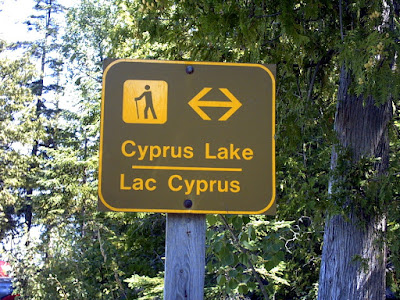








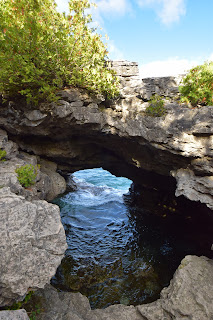




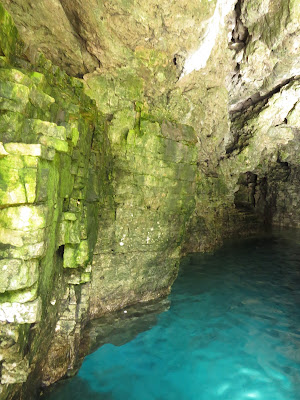


.JPG)
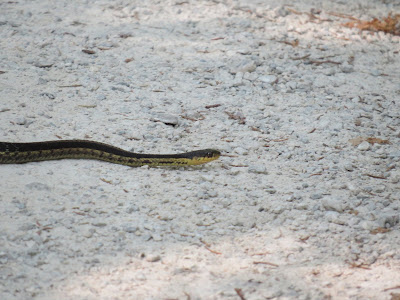
















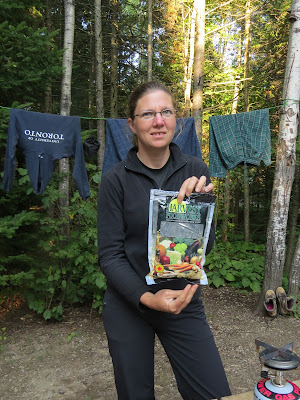



Comments
Post a Comment